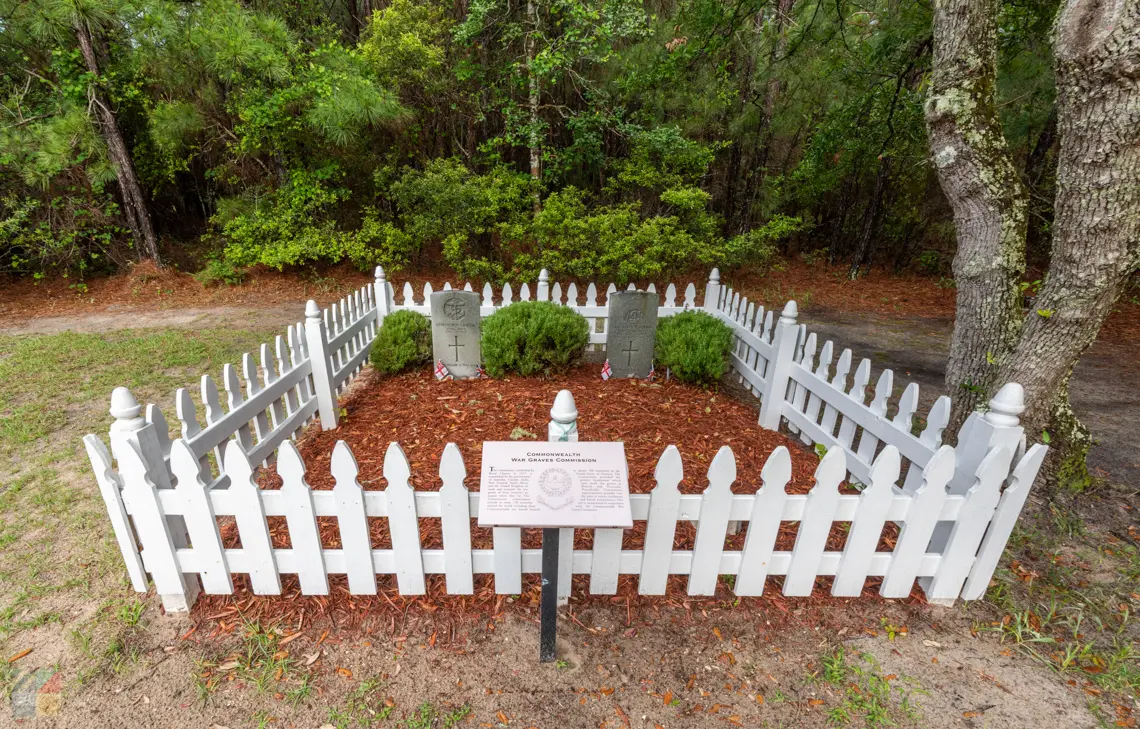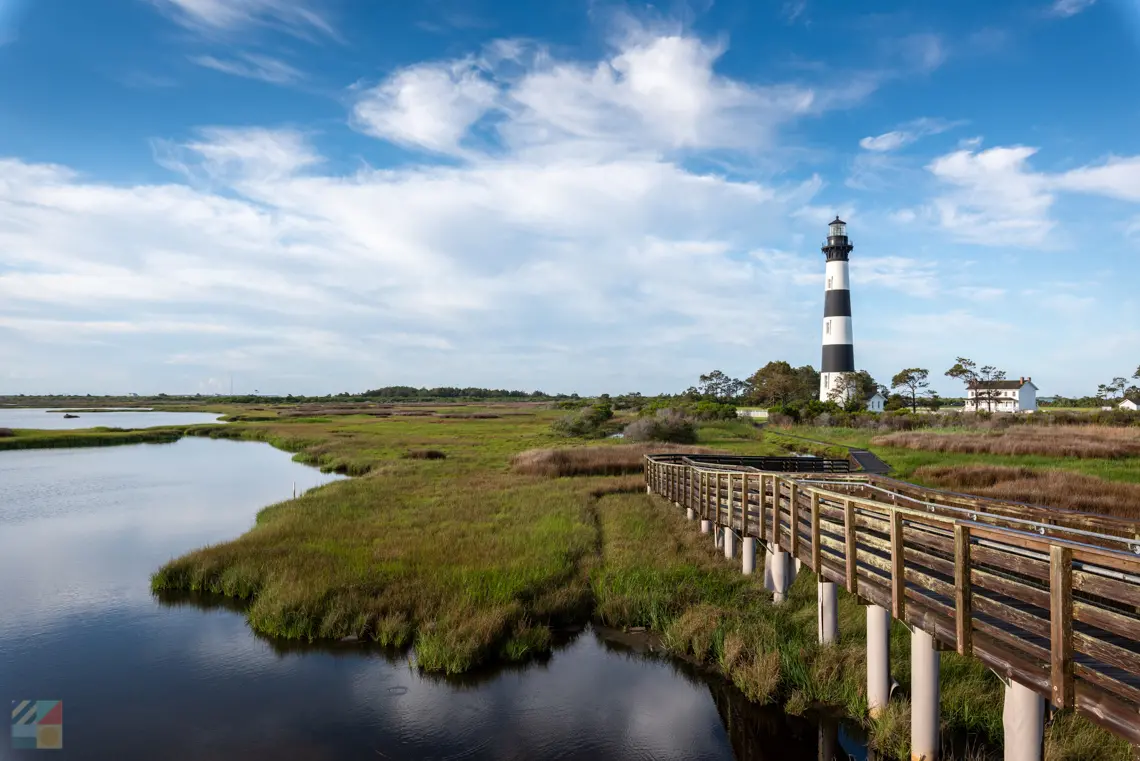
The quiet barrier islands of the Outer Banks have a surprisingly tumultuous history, due in no small part to their proximity to the Diamond Shoals. Over the years, hundreds of ships were caught in the crosshairs of the Gulf Stream, the Labrador Current, and the ever-shifting sandbars that lay just off the coast, waiting to virtually land-lock any passing ships, and batter them with crashing waves from seemingly every direction.

A series of lighthouses erected along the coastline in the 1800s, (many which are still in operation today and open to visitors), helped put a temporary end to the dozens of shipwrecks that would occur every year. During the World Wars, however, this section of the coastline remained deadly for passing mariners for an entirely different reason, and the steadfast moniker of "Diamond Shoals" was replaced by a new but equally ominous nickname, "Torpedo Junction."
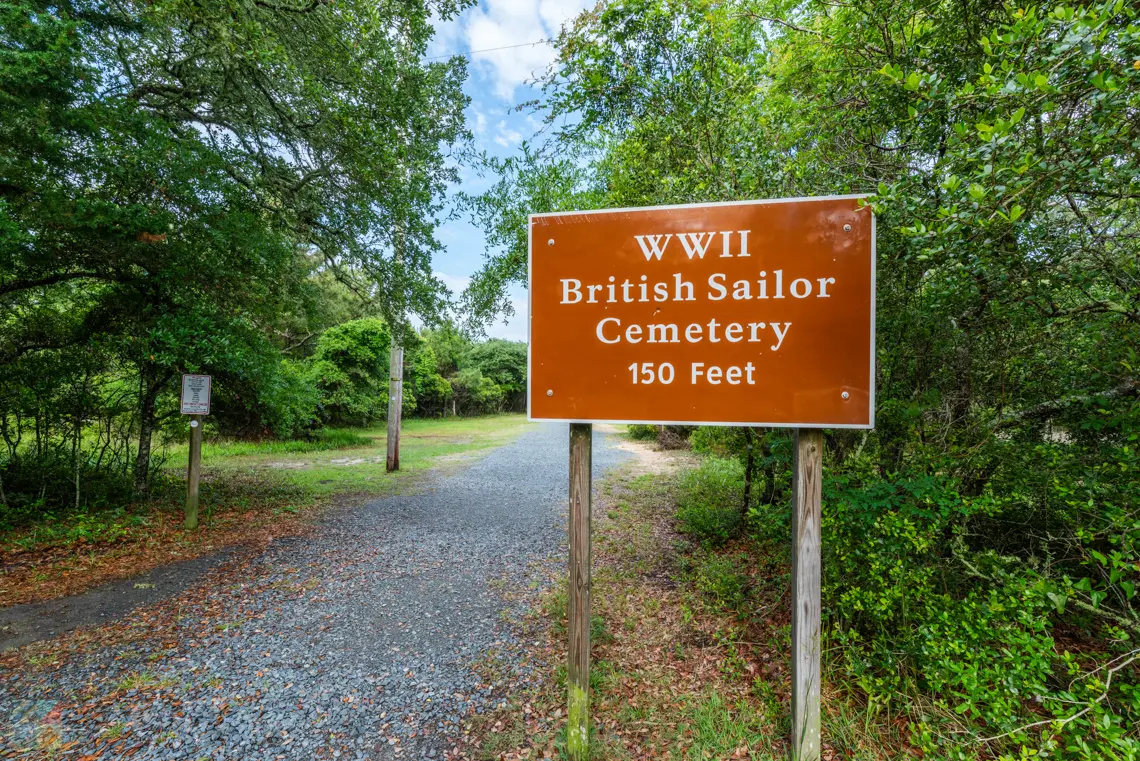
In both World War I and World War II, it was not unusual for German U-Boats to lurk off the North Carolina coast, just biding their time and waiting for orders from the higher-ups to attack the U.S. mainland. Thankfully, these orders never came, but in the interim the U-Boats created a barrier of sorts, preventing allied forces from accessing the coastline and providing much needed goods and supplies. Blockades had always been a problem off the Outer Banks, in both the Revolutionary and Civil Wars, and it seemed that the German had also discovered that lingering off the coast and threatening commercial vessels was an effective way to prevent trade and goods from coming ashore.
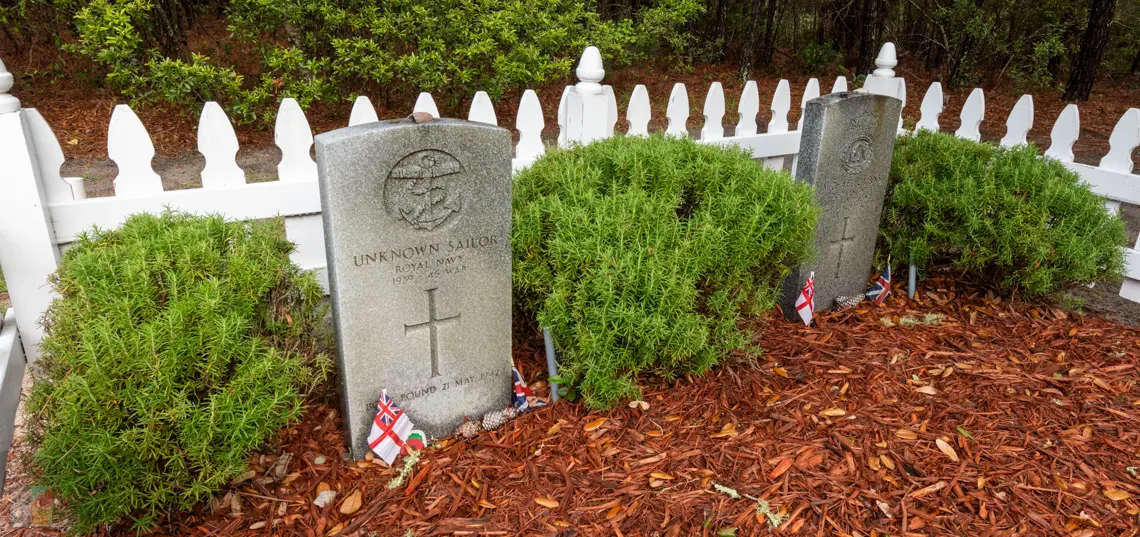
Allied forces from Europe, (and mainly England which had a world-renowned Navy), were sent to the American coastline to seek out and destroy these German invaders. As a result, during both World Wars, a number of ships and submarines were destroyed because of confrontations between Allied and German troops.
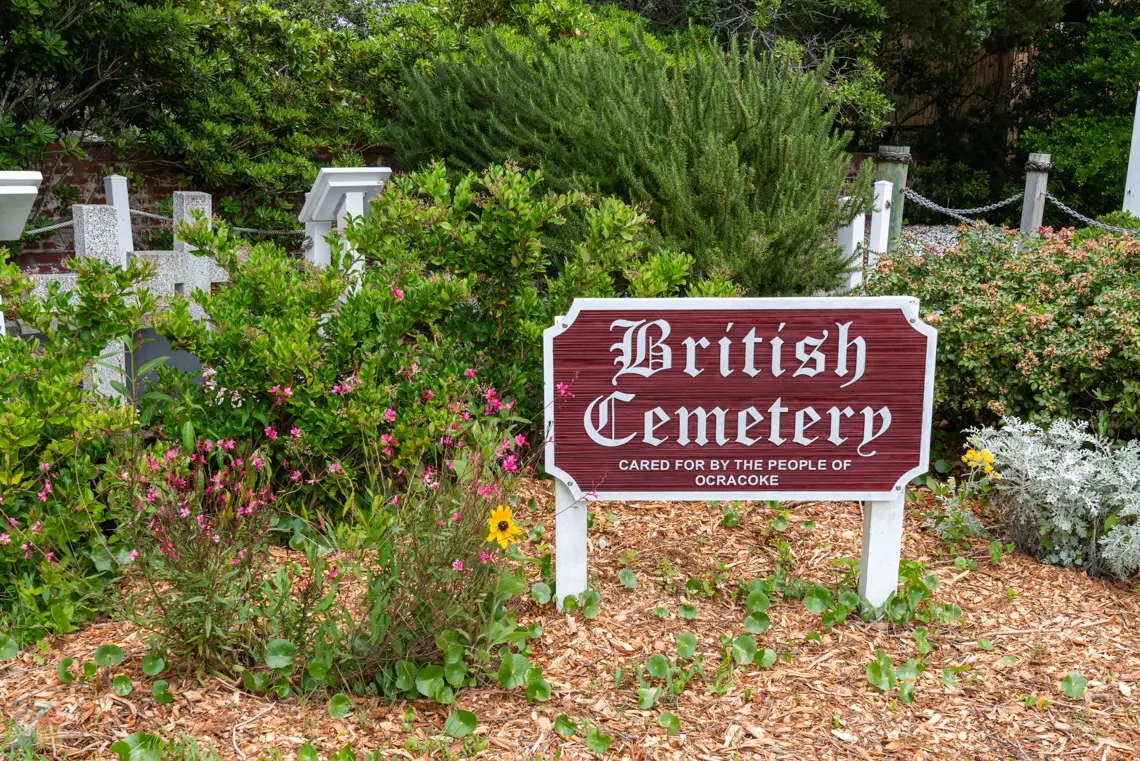
Over the years, the causalities became so egregious that a makeshift paved road was constructed in Buxton, just a couple hundred yards south of the Cape Hatteras Lighthouse's original location. This narrow paved path led all the way from the beach to the outskirts of town, and provided both rescuers and scavengers an easy route to transport both shipwreck victims and washed-up goods from the beaches. The small paved road can still be seen today, (although it is barely visible from the main road), and is located in between the Cape Hatteras Lighthouse and the Cape Point beach access ramp for 4WD vehicles.
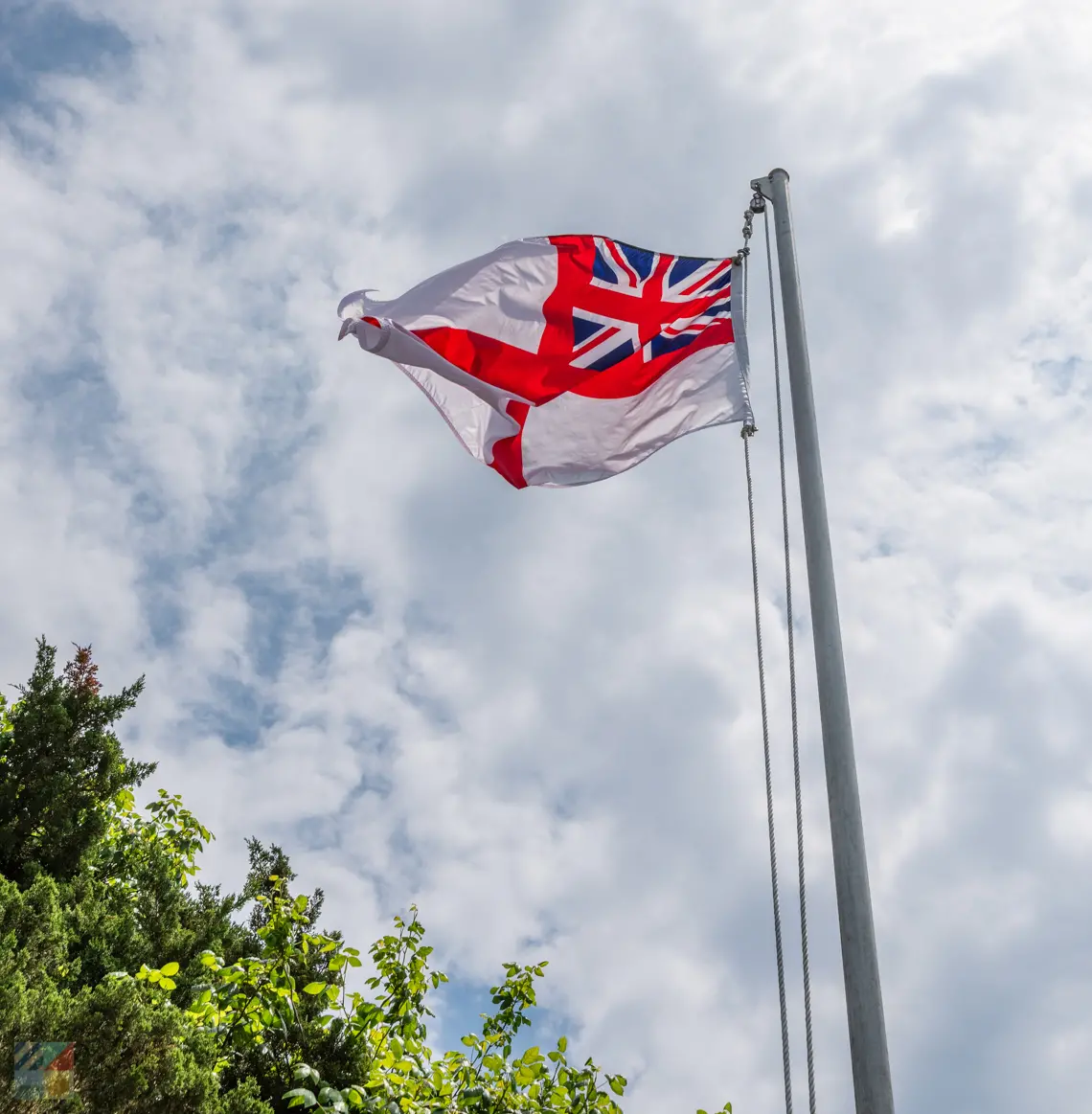
Close to this slowly deteriorating paved road lies the Hatteras Island British Cemetery. It's hard to spot initially, and is located in a quiet and secluded part of the Buxton Woods maritime forest. In this locale, visitors will find the graves of two unnamed British Soldiers, washed up within the span of a year during World War II. The gravesites are protected by a small white picket fence, and shaded from the road by tall pines and cedar trees. To find the British Cemetery, simply look for a wide shaded path on the soundside of the Cape Hatteras Lighthouse road. The cemetery is located just a few yards along this popular local nature trail, which extends all the way to Frisco Village.
Neighboring Ocracoke Island is also home to a more well-known and well-marked British Cemetery, located in the heart of town, just behind the Ocracoke Village ferry docks. The Ocracoke Island cemetery is a better known historical site because of the limited size of Ocracoke, (at 4 square miles it doesn't take long to explore the area in its entirety), as well as the posted signs and maintenance of the site itself. While the Buxton cemetery is tucked away quietly in the woods, the Ocracoke cemetery is landscaped with fresh flowers and landscaping, with small granite monuments around the premises to honor the fallen sailors. Like the Buxton cemetery, the gravesites of the four sailors that lie on this 2,290-square-foot plot of land are protected by a small fence, and guarded by a British naval flag flying above the site.
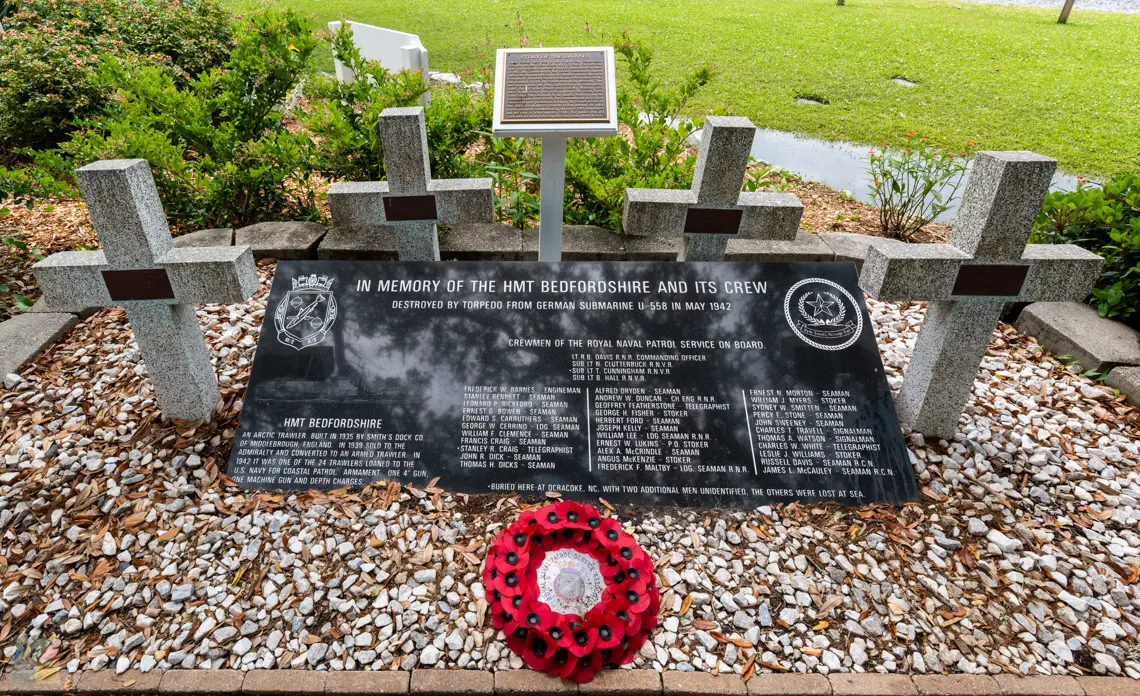
The stories of how the sailors came to rest on the Outer Banks are intertwined, and begin with the sinking of the San Delfino, which was destroyed by German torpedos in 1941. After the attack, the body of an unknown sailor washed ashore on the beaches of Buxton, and was quietly but respectively buried nearby in Buxton Woods by village locals.
Just one year later, on May 12, 1942, another attack on a British ship would occur off the coastline. This time an attack was waged the HMS Bedfordshire, an original English trawling vessel that had been converted to seek out lurking German submarines. While the Bedfordshire was patrolling the Outer Banks coastline, a hidden German submarine fired a torpedo, directly striking the ship and causing it to sink. The entire 34 man crew was lost in the aftermath.
Over the four days that followed, four bodies originating from the Bedfordshire attack washed up along the Ocracoke beaches. Saddened and concerned Ocracoke villagers carried the bodies ashore, and buried them in a quiet plot of land in town, next to the villager's own community cemetery. One last body from the Bedfordshire washed up a few days later on Hatteras Island, and the sailor was buried respectively by local Buxton residents next to the sailor from the San Delfino.
Today, the neighboring US Coast Guard carefully maintains and preserves the Ocracoke British Cemetery, while the Buxton British Cemetery is protected by the National Park Service, also located nearby.

Every year on May 12, the anniversary of the Bedfordshire's sinking, members of the US Coast Guard, the National Park Service, and the British Royal Navy honor the men buried at both Hatteras Island and Ocracoke cemeteries. Visitors and locals alike are welcome to witness the ceremony, and many do, standing quietly by and honoring the fallen heroes. During the memorial, current servicemen place wreathes along each of the graves, while island locals read aloud the names of the dead that had fallen during the deadly reign of the Torpedo Junction. To close the ceremony, the sailors are honored with a quiet playing of "Taps," followed by a 21-gun salute.
Visitors are welcome to visit both cemeteries any time of year, provided they stay outside of the designated fencing and remain respectful of the fallen sailors that risked their lives to protect the coastline from German U-Boats, and provide safe transport to passing American ships.

The deadly threat of Torpedo Junction is long gone, and even the Diamond Shoals have lost some of their intimidation to present-day mariners as modern navigational tools make it much easier to avoid and veer away from the shifting sandbars. However, Hatteras and Ocracoke Islanders won't soon forget the two world wars that brought regular shipwrecks and destruction to the shoreline, and the small cemeteries located in Buxton and Ocracoke villages are testaments to this dark period of local history.
Today, locals and visitors alike are proud and honored to preserve the islands' stormy wartime history, and the sailors who helped protect and preserve the Outer Banks for generations to come. On your next visit to the Cape Hatteras Lighthouse or Ocracoke Village, take a moment to visit the British Cemeteries and pay respect to the sailors who fought for American freedom, and now rest peacefully on the Outer Banks.
-
St. Patrick's Day Day Beer Mile
March 7th, 2026 2:00 PM -
Blackbeard's Revenge 100
March 21st, 2026 - March 22nd, 2026 -
Outer Banks Bike Week
April 24th, 2026 - April 26th, 2026
Black Pelican oceanfront restaurant is one of the Outer Banks’ premier restaurants serving lunch and dinner daily. Black Pelican is where you can enjoy fresh seafood, steaks, vegetarian dishes, sandwiches and some of the barrier island’s...
The Bodie Island Lighthouse, (pronounced "Body") is located just south of the town of Nags Head and Whalebone Junction, where Highway 158, Highway 64, and NC Highway 12 intersect. Visitors travelling towards Hatteras Island can't help but notice the...
Low Country Seafood from the islands. North, South, East or West, our menu will satisfy any cravings you have while on your beach vacation! Let us do the cooking tonight! Reseservations and Outdoor Seating available. We’ve got something...
